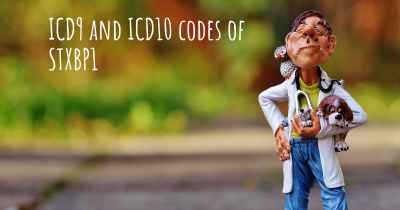What is the life expectancy of someone with STXBP1?
Life expectancy of people with STXBP1 and recent progresses and researches in STXBP1

STXBP1 (Syntaxin Binding Protein 1) is a rare genetic disorder that affects the brain's development and function. It is characterized by intellectual disability, epilepsy, and movement disorders. The life expectancy of individuals with STXBP1 can vary significantly depending on the severity of symptoms and associated complications. While there is limited data available, it is important to note that life expectancy cannot be accurately predicted for individuals with STXBP1 due to the wide range of symptoms and individual variations. It is crucial for individuals with STXBP1 to receive appropriate medical care, early intervention, and ongoing support to optimize their quality of life.
STXBP1 (Syntaxin Binding Protein 1) is a rare genetic disorder that affects the brain and nervous system. It is caused by mutations in the STXBP1 gene, which plays a crucial role in the release of neurotransmitters in the brain. This condition primarily affects infants and young children, leading to a range of developmental and neurological symptoms.
The life expectancy of individuals with STXBP1 can vary significantly depending on the severity of their symptoms and the presence of any associated medical conditions. It is important to note that predicting life expectancy in such cases is challenging due to the limited number of reported cases and the lack of long-term data.
Developmental delays and intellectual disabilities are common in individuals with STXBP1. They may experience delays in reaching developmental milestones such as sitting, crawling, walking, and talking. Intellectual disabilities can range from mild to severe, impacting cognitive abilities and overall learning potential.
Epilepsy and seizures are prevalent in individuals with STXBP1. Seizure types can vary, including focal seizures, generalized tonic-clonic seizures, and atypical absence seizures. The frequency and severity of seizures can significantly impact the quality of life and overall health of affected individuals.
Movement disorders are another characteristic feature of STXBP1. These can include dystonia, ataxia, and involuntary muscle contractions. These movement abnormalities can affect coordination, balance, and fine motor skills, further impacting daily activities and independence.
Gastrointestinal issues such as gastroesophageal reflux disease (GERD) and feeding difficulties are commonly observed in individuals with STXBP1. These issues can lead to poor weight gain, malnutrition, and associated complications.
Respiratory problems may also be present in individuals with STXBP1. These can include breathing difficulties, recurrent respiratory infections, and an increased susceptibility to pneumonia. Respiratory issues can pose significant health risks and require careful management.
Given the complexity and variability of symptoms in STXBP1, it is challenging to provide a specific life expectancy range. Some individuals with milder forms of the condition may have a relatively normal life expectancy, while those with more severe symptoms and associated medical complications may have a reduced life expectancy.
Early diagnosis and comprehensive medical care are crucial in managing STXBP1. A multidisciplinary approach involving neurologists, geneticists, developmental specialists, and other healthcare professionals can help optimize treatment and support. This may include medications to manage seizures, physical and occupational therapy to address movement difficulties, and interventions to address developmental and behavioral challenges.
Supportive care and interventions can significantly improve the quality of life for individuals with STXBP1 and their families. Early intervention programs, educational support, and assistive devices can help individuals reach their maximum potential and enhance their overall well-being.
Research and advancements in understanding STXBP1 are ongoing, which may lead to improved treatments and interventions in the future. Genetic counseling and testing can also provide valuable information for families regarding the inheritance pattern and recurrence risks.
In conclusion, the life expectancy of individuals with STXBP1 can vary greatly depending on the severity of symptoms and associated medical conditions. It is essential for affected individuals to receive early diagnosis, comprehensive medical care, and ongoing support to optimize their quality of life and overall well-being.
Posted Mar 26, 2017 by Aparker77 1002
Posted Jun 24, 2018 by Jaylenesmommy 2500
Posted Jul 9, 2018 by Elizabeth 600
Posted Dec 22, 2022 by Carmem Lucia 200
Posted Feb 13, 2024 by Joshua 600
Posted Mar 26, 2017 by Julio Angel 1000








